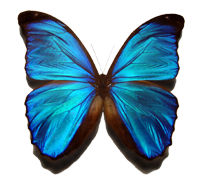 |
Home Support Engineering Software Engineering Sensory Experience Spare Equipment |
Accessible/Content-Only/Printer-Friendly Jann Padley Sensory Experience Telephone: 01452-840714 (UK) Mobile: 07800-603610 (UK) Enquiries@JPSE.Co.UK |
| Introduction | |
| Fine Art Prints | |
| Fine Art Print Details | |
| Reproduction |

|
| Colour Theory | |
| Colour Management | |
| Materials and Methods | |
| Colour Managed Workflow | |
| Book With No Words |
Reproduction of Original Artwork
One might think that reproducing a picture or a painting with modern technology would be fairly simple, but this is very far from the truth - this was easily the most complex task that I have ever undertaken. The majority of the problems revolve around reproducing colour - although I have a good understanding of both the physics of light and computer graphics, I had not previously studied colour theory or colour management. This document is merely an overview of the process we followed to reliably create astonishingly accurate reproductions. It is not supposed to be a guide or manual of any kind - the process is far too complex for that. An understanding of the basic principles of colour is essential in order to photograph or print anything accurately, so I include sections on Colour Theory and Colour Management. These sections introduce the concepts that must be thoroughly understood in order to choose appropriate Materials and Methods, and finally to implement a Colour Managed Workflow, but first an obvious caveat:
The Appearance of Materials
Frances Vesma’s pictures incorporate a wide and unusual range of materials whose appearance is defined not just by colour but also by texture and sheen, transparency and translucency, fluorescence and iridescence, and probably even more obscure effects. Photography cannot capture these effects in their entirety.
- A photograph can capture highlights and shadows caused by the weave of a canvas, but will not have the rough texture of the original.
- A photograph can capture the colours of a stained glass window, but will not cast beams of coloured light like the real thing.
- A photograph can capture the ripples on a lake, but will not flow like water.
Of course one cannot actually reproduce a stained glass window or a lake using photography, but merely two-dimensional representations of them. In the same way, it is not actually possible to reproduce Frances’ pictures using photography, but it is possible to create excellent representations of them…

